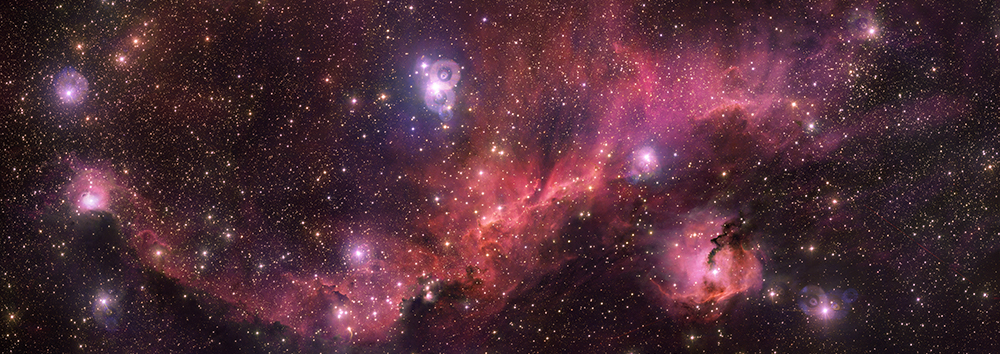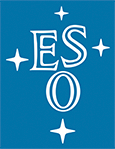© European Southern Observatory
Colourful and wispy, this intriguing collection of objects is known as the Seagull Nebula, named for its resemblance to a gull in flight. Made up of dust, hydrogen, helium and traces of heavier elements, this region is the hot and energetic birthplace of new stars. The remarkable detail captured here by ESO’s VLT Survey Telescope (VST) reveals the individual astronomical objects that make up the celestial bird, as well as the finer features within them. The VST is one of the largest survey telescopes in the world observing the sky in visible light.
The main components of the Seagull are three large clouds of gas, the most distinctive being Sharpless 2-296, which forms the “wings”. Spanning about 100 light-years from one wingtip to the other, Sh2-296 displays glowing material and dark dust lanes weaving amid bright stars. It is a beautiful example of an emission nebula, in this case an HII region, indicating active formation of new stars, which can be seen peppering this image.
It is the radiation emanating from these young stars that gives the clouds their fantastical colours and makes them so eye-catching, by ionising the surrounding gas and causing it to glow. This radiation is also the main factor that determines the clouds’ shapes, by exerting pressure on the surrounding material and sculpting it into the whimsical morphologies we see. Since each nebula has a unique distribution of stars and may, like this one, be a composite of multiple clouds, they come in a variety of shapes, firing astronomers’ imaginations and evoking comparisons to animals or familiar objects.
About ESO
ESO, the European Southern Observatory, is the foremost intergovernmental astronomy organisation in Europe and the world’s most productive astronomical observatory. ESO provides state-of-the-art research facilities to astronomers and is supported by Austria, Belgium, the Czech Republic, Denmark, Finland, France, Germany, Italy, the Netherlands, Poland, Portugal, Spain, Sweden, Switzerland and the United Kingdom, along with the host state of Chile. Several other countries have expressed an interest in membership.



